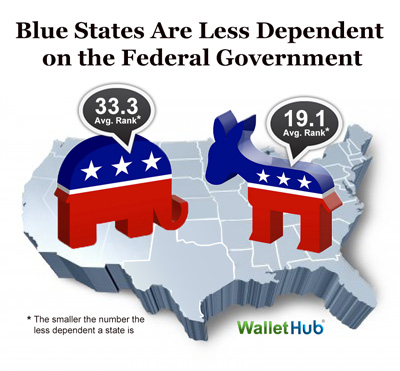
The top ten in order of dependency are Mississippi, New Mexico, Alabama, Louisiana, Maine, Montana, Tennessee, South Dakota and Arizona. The five states most independent of federal subsidy are (in order): Delaware, Illinois, Minnesota, New Jersey, and Connecticut.
The article is good and full of interesting footnotes -- for example, Delaware's seeming independence is largely illusory, an artifact of its stock franchise tax drawn from out-of-state companies.
What if, for example, a particular state can afford not to tax its residents at high rates because it’s receiving disproportionately more funding from the federal government than states with apparently oppressive tax codes? That would change the narrative significantly, revealing federal dependence where bold, efficient stewardship was once thought to preside.
The idea of the American freeloader burst into the public consciousness when #47percent started trending on Twitter. And while the notion is senselessly insulting to millions of hardworking Americans, it is true that some states receive a far higher return on their federal income tax investment than others.
Just how pronounced is this disparity, and to what extent does it alter our perception of state and local tax rates around the country? WalletHub sought to answer those questions by comparing the 50 states and the District of Columbia in terms of three key metrics: 1) Return on Taxes Paid to the Federal Government; 2) Federal Funding as a Percentage of State Revenue; and 3) Number of Federal Employees Per Capita.

No comments:
Post a Comment